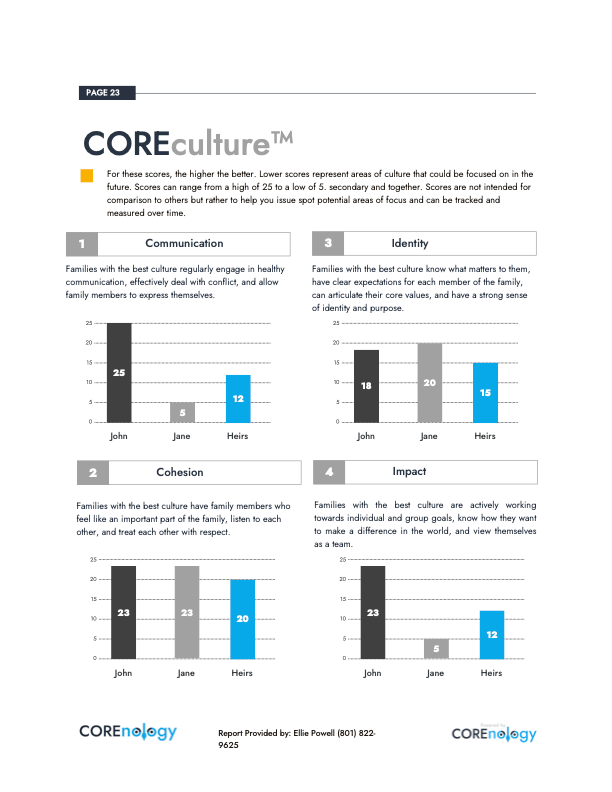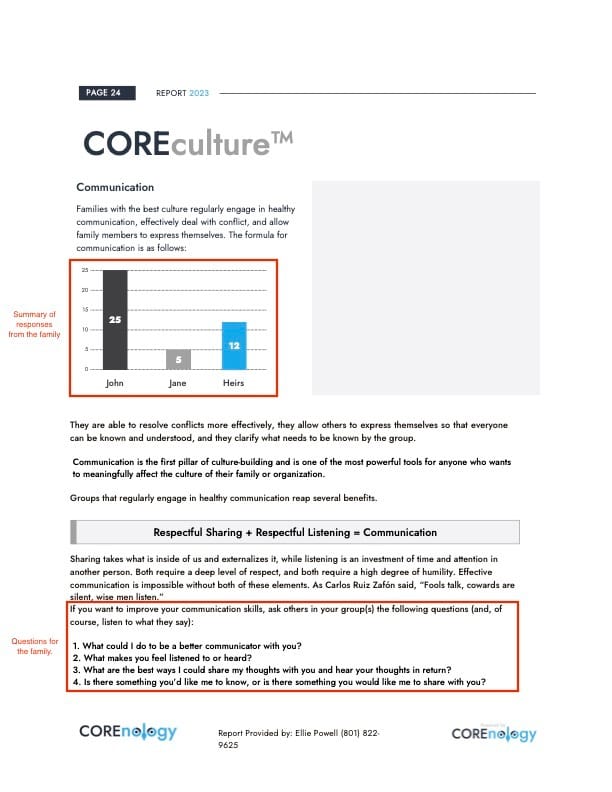- COREnology Academy
- Posts
- What is the COREculture report?
What is the COREculture report?
Module 4 — Lesson 2

In this lesson you’ll learn:
What the COREculture report looks like
What information is contained in the report
The four pillars of culture
What scenarios might be appropriate for you to share this assessment with a client

The COREculture report shares responses to assessment questions about 4 pillars of culture: communication, cohesion, identity, and impact.
The COREculture survey and report allow you to help clients intentionally assess their family culture.
The report provides scores for each partner in the relationship, and then a combined score for their heirs (children, grandchildren, etc.). The report is designed to keep the heirs’ (next generation) answers anonymous, so each family member feels the freedom to answer honestly.
The report uses a bar graph (5 low, 25 high) to indicate the family’s response to each pillar of culture.
The cover page shares an overview of the scores for each of the four pillars:

Example of the cover page of a COREculture report
Subsequent pages look at each metric individually, sharing a clear definition and explanation of that pillar of culture. Each page also shares a set of questions families can use to improve that aspect of their family culture.

Example of a summary page for one of the 4 pillars of culture
The COREculture scores are not meant to be a report card grade, but a temperature reading. How are we doing in these areas right now?
By leading families through open discussion about their results, you help them identify areas of strength as well as areas in need of attention. The questions on each pillar of culture page serve as a simple take-away tool for the family to use on their own.
Offering your clients this report makes you a catalyst for intergenerational discussions. It also sets you up to provide financial advice and tools to the next generation to help prepare them for wealth transfer in the future.
The COREculture report can be used:
With established clients to allow for deeper, more meaningful discussions
To engage a partner who is disengaged or absent from financial conversations
With families who share with you a concern about their long-term well-being
To facilitate intergenerational communication and mentoring
To help families working on improving communication, connection, and sense of belonging, or alignment
